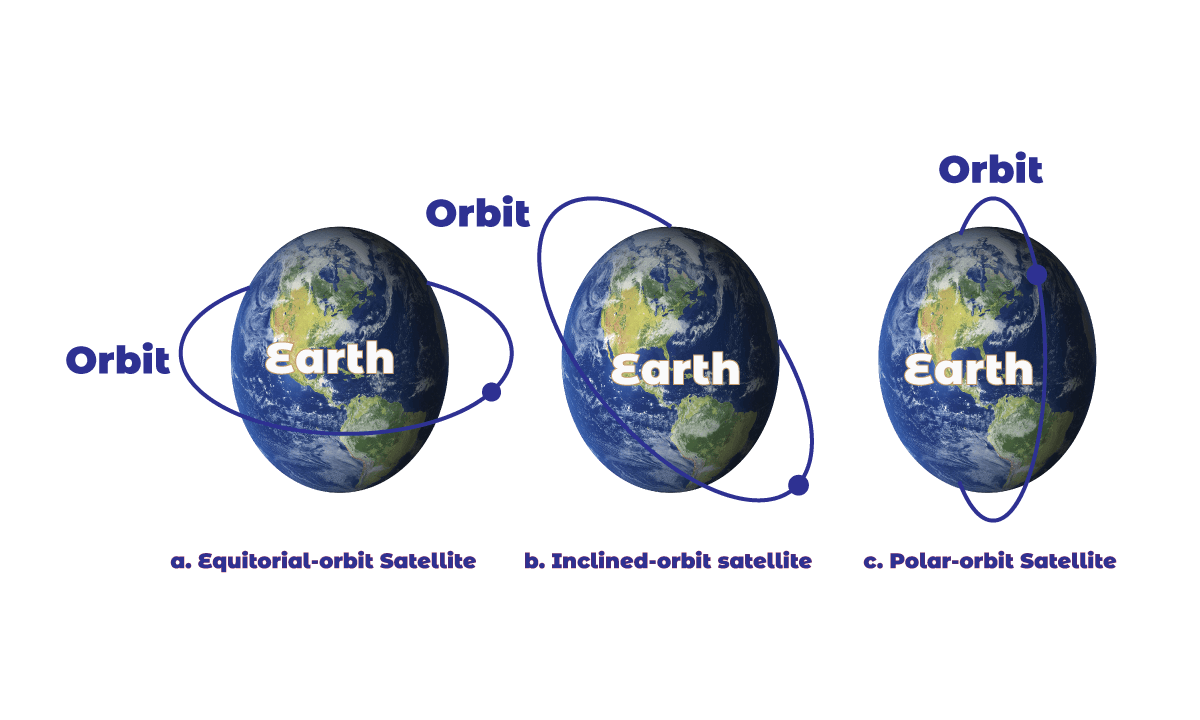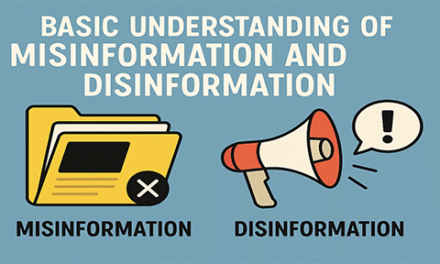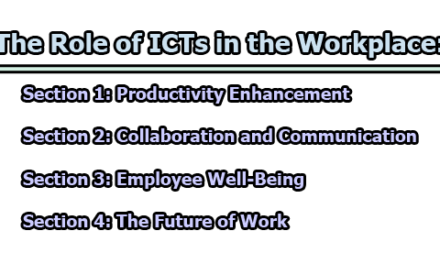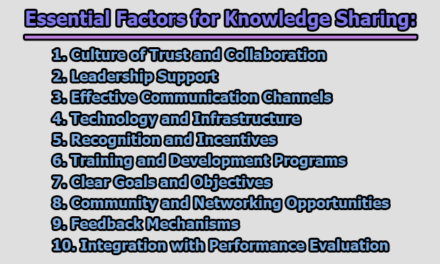Print and Electronic Media:
Print and electronic media are two prominent forms of mass communication that play crucial roles in disseminating information to the public. While print media refers to publications such as newspapers, magazines, and books, electronic media encompasses various digital platforms, including television, radio, and the internet. Both forms have their unique characteristics, advantages, and disadvantages, and they significantly impact society.
Characteristics of Print Media:
The characteristics of print media encompass various aspects that contribute to its unique identity and significance. Let’s explore them in detail:
1. Tangibility: One of the distinguishing features of print media is its tangible nature. Unlike electronic media, print publications are physical objects that readers can touch, hold, and interact with. This tangibility provides a sensory experience that engages readers on a different level, allowing them to feel a connection to the content and the medium itself.
2. Permanence: Print media offers a sense of permanence. Once a publication is printed, its content remains fixed and accessible for an extended period. This characteristic allows readers to revisit information, study it in-depth, and refer back to it whenever necessary. It also enables the preservation of historical records and serves as a valuable resource for future reference.
3. Credibility: Print media is often perceived as more credible and trustworthy compared to electronic sources. This credibility stems from the editorial processes involved in print production. Newspapers, for instance, employ professional journalists who adhere to ethical standards and fact-checking procedures. The stringent editorial oversight enhances the reliability and authenticity of the information presented in print publications.
4. Wide Reach: Print media has historically enjoyed a broad reach, catering to diverse audiences across various demographics. Newspapers, for example, can be distributed locally, regionally, or nationally, providing access to a large number of readers. Similarly, magazines and books target specific interest groups or genres, enabling publishers to cater to niche markets effectively.
5. Versatility: Print media exhibits versatility in terms of content formats and presentation styles. It encompasses written articles, photographs, illustrations, infographics, advertisements, and more. This versatility allows publishers to convey information in different ways, appealing to readers with varying preferences. It also provides opportunities for creative expression and artistic endeavors within the print medium.
6. In-depth Reporting: Print media excels in providing detailed, in-depth reporting on various topics. Newspapers, in particular, have a long tradition of investigative journalism, analysis, and comprehensive coverage of news events. The print format allows for lengthy articles that delve into complex issues, providing readers with a thorough understanding and critical insights.
7. Targeted Advertising: Print media offers a unique advantage for targeted advertising. Different publications cater to specific audiences, allowing advertisers to select the most relevant platforms for their target demographic. This targeting ability ensures that advertisements reach the intended audience effectively, maximizing the return on investment for advertisers and fostering a symbiotic relationship between publishers and advertisers.
8. Aesthetic Appeal: The physical presentation of print media contributes to its aesthetic appeal. Design elements such as layout, typography, colors, and graphics play a crucial role in enhancing the reading experience. Publishers can utilize various printing techniques, paper qualities, and visual elements to create visually appealing publications that capture the attention and interest of readers.
Characteristics of Electronic Media:
Electronic media has emerged as a dominant force in the modern media landscape, offering unique characteristics that differentiate it from print media. Let’s delve into the detailed characteristics of electronic media:
1. Immediacy: One of the primary characteristics of electronic media is its ability to provide immediate access to information and content. With the advent of the internet and digital technologies, news, updates, and entertainment can be disseminated and consumed in real time. Electronic media platforms allow for instant publishing and broadcasting, ensuring that users can stay up-to-date with the latest developments.
2. Interactivity: Electronic media fosters interactivity and user engagement. Unlike print media, electronic platforms enable users to interact with content, participate in discussions, and provide feedback. Through comments, likes, shares, and other features, individuals can actively engage with media organizations, content creators, and other users, fostering a sense of community and social interaction.
3. Multimedia Capabilities: Electronic media integrates various multimedia elements, including text, images, audio, and video. This multimedia approach enables the delivery of content in diverse formats, enhancing the overall user experience. Television broadcasts, for example, combine moving images, sound, and graphics to present information and entertainment in a visually engaging and dynamic manner.
4. Global Reach: Electronic media has the potential to reach a global audience. Through the internet and digital platforms, content can be accessed from anywhere in the world, transcending geographical boundaries. This characteristic allows media organizations, content creators, and individuals to disseminate information, express opinions, and share cultural experiences with a vast and diverse audience.
5. Accessibility: Electronic media offers high accessibility due to its digital nature. Content can be accessed on a range of electronic devices, including smartphones, tablets, computers, and smart TVs. This accessibility enables users to consume media whenever and wherever they choose, making it convenient for individuals with varying schedules and lifestyles.
6. Customization and Personalization: Electronic media platforms often provide customization and personalization options. Users can tailor their content preferences, receive recommendations based on their interests, and have personalized experiences. This characteristic allows individuals to have greater control over the media they consume, fostering a sense of individuality and catering to diverse preferences.
7. Cost-effective Distribution: Electronic media provides cost-effective distribution channels for content creators and publishers. Unlike print media, which requires printing, distribution, and physical infrastructure, electronic media allows for digital publishing and online distribution. This aspect lowers production costs, reduces barriers to entry for content creators, and enables smaller organizations and individuals to reach a wide audience without substantial financial investments.
8. Real-time Analytics: Electronic media platforms offer real-time analytics and insights into audience behavior, engagement, and content performance. Through data tracking and analysis, media organizations and content creators can gather valuable information about their audience demographics, preferences, and consumption patterns. This data-driven approach allows for informed decision-making, content optimization, and targeted marketing strategies.
Advantages of Print Media:
- Tangibility and Physical Engagement: Print media provides a tangible reading experience that engages multiple senses. Readers can physically hold and interact with newspapers, magazines, or books, creating a unique connection with the content. The act of turning pages, underlining important sections, and bookmarking contributes to a more immersive reading experience.
- Enhanced Credibility and Trustworthiness: Print publications often go through thorough editorial processes and fact-checking procedures, ensuring a higher level of credibility and trustworthiness. Readers tend to perceive print media as more reliable sources of information, as they are often associated with established publishing companies with a reputation for accuracy and journalistic integrity.
- In-depth and Comprehensive Content: Print media allows for in-depth reporting, detailed analysis, and long-form articles. Newspapers and magazines can delve into complex topics, providing comprehensive information and perspectives. This characteristic is particularly valuable for complex news stories, investigative journalism, and feature articles that require extensive research and detailed explanations.
- Effective Targeting of Specific Audiences: Print publications cater to specific interests and demographics, offering advertisers the advantage of targeting their desired audience effectively. By placing ads in publications that align with their target market, businesses can increase the chances of reaching potential customers who are more likely to be interested in their products or services.
- Sense of Permanence and Historical Preservation: Print media provides a sense of permanence. Once printed, newspapers, magazines, and books can be preserved and referred back to for future reference. This aspect makes print media a valuable historical record, documenting significant events, cultural trends, and social movements.
- Portability for Offline Access: Print media offers the advantage of offline accessibility. Readers can carry newspapers, magazines, or books anywhere and read them without relying on internet connectivity. This feature is particularly beneficial in areas with limited internet access or for individuals who prefer to disconnect from digital devices.
- Versatility in Formats and Reading Preferences: Print media comes in various formats to cater to different reading preferences. Newspapers offer daily or weekly updates on current events, while magazines provide a range of topics and interests. Books offer in-depth exploration of subjects and narratives, allowing readers to engage with a particular topic or story over a more extended period.
- Visual Appeal and Engaging Design Elements: Print publications leverage design elements, typography, layouts, and high-quality printing techniques to enhance visual appeal. Eye-catching cover designs, captivating images, and well-organized layouts contribute to an engaging and aesthetically pleasing reading experience, capturing the reader’s attention and enhancing content comprehension.
- Reduced Distractions Compared to Electronic Media: Print media offers a more focused reading experience without the distractions commonly found in electronic media. Unlike digital platforms with pop-up ads, notifications, and hyperlinks that can divert attention, print media allows readers to concentrate solely on the content at hand, promoting deeper engagement and concentration.
- Collectibility and Cultural Significance: Print publications can be collected and become cultural artifacts or cherished possessions. Collectors value rare or historic editions, while libraries and archives preserve print publications as a part of cultural heritage. Print media’s physicality and historical significance contribute to its enduring cultural value.
Disadvantages of Print Media:
- Limited Timeliness: Print media operates on a fixed production and distribution schedule, which can result in delays in delivering up-to-the-minute news and information. Breaking news or rapidly evolving events may not be captured in print publications, making them less suitable for immediate and time-sensitive updates.
- Cost and Production Constraints: Printing and distributing physical copies of print media can be expensive. The costs associated with paper, ink, printing equipment, and distribution logistics can pose financial challenges, particularly for smaller publications or organizations with limited resources. Additionally, print media requires lead time for production, which can restrict the ability to respond quickly to emerging news or trends.
- Environmental Impact: Print media relies on paper, which has an environmental footprint in terms of deforestation, energy consumption, and waste generation. The production and disposal of print materials contribute to the depletion of natural resources and contribute to environmental pollution. As concerns about sustainability and eco-consciousness grow, the environmental impact of print media becomes a significant disadvantage.
- Limited Interactivity: Unlike electronic media, print media lacks interactive features and multimedia capabilities that allow users to engage directly with the content. Printed materials do not offer clickable links, videos, or interactive elements that enhance user engagement and interactivity, limiting the ways in which readers can interact with the content.
- Space Limitations: Print media is subject to physical space limitations. Newspapers, magazines, and books have finite pages, restricting the amount of content that can be included. This can result in the omission of certain information or the need for abridged versions of articles, potentially sacrificing depth or nuance in reporting.
- Distribution Challenges: Print media requires physical distribution channels such as newsstands, delivery networks, or subscription services. This poses challenges in reaching audiences in remote or underserved areas, especially in regions with limited infrastructure or where print media distribution networks are less developed.
- Lack of Real-time Updates: Print media cannot provide real-time updates or immediate corrections to published content. Once an issue goes to print, any errors or inaccuracies cannot be rectified until the next edition. This lack of real-time correction and updates can undermine the accuracy and currency of information presented in print media.
- Declining Readership: With the rise of digital media, print media has experienced a decline in readership and circulation. Many readers now prefer the convenience and accessibility of digital platforms, which offer instantaneous access to a wide range of information. This shift in readership patterns poses challenges for print media organizations in terms of sustainability and profitability.
- Limited Audience Reach: Print media may have limitations in reaching certain demographic groups, particularly younger audiences who are more digitally oriented. Younger generations are increasingly consuming news and information through online sources, social media, and other digital platforms, which may result in a decreased audience base for print media.
- Adapting to Digital Transformation: Print media organizations often face challenges in adapting to the digital transformation of the media industry. Transitioning from traditional print formats to digital platforms requires investment in technology, retraining of staff, and restructuring business models. The shift to digital media can be disruptive and necessitate significant changes in operations, which may pose difficulties for some print media outlets.
Advantages of Electronic Media:
- Immediate and Real-time Updates: Electronic media offers the advantage of delivering news and information in real time. Through digital platforms such as websites, social media, and news apps, users can access the latest updates and breaking news as they unfold. This immediacy ensures that users stay informed about current events and developments.
- Interactivity and User Engagement: Electronic media fosters interactivity and user engagement. Users can actively participate in discussions, share their opinions, and provide feedback through comments, likes, shares, and other interactive features. This level of engagement creates a sense of community and allows for the exchange of ideas and diverse perspectives.
- Multimedia Integration: Electronic media seamlessly integrates multimedia elements such as text, images, audio, and video. This multimedia approach enables the presentation of information and entertainment in a dynamic and engaging manner. Videos, infographics, and interactive graphics enhance the user experience, making content more compelling and visually appealing.
- Global Reach and Accessibility: Electronic media has a vast global reach, transcending geographical boundaries. With internet connectivity, users from around the world can access online content, breaking down barriers of distance and enabling the dissemination of information to a global audience. Electronic media ensures that content is accessible to users regardless of their physical location.
- Customization and Personalization: Electronic media platforms provide customization and personalization options. Users can tailor their content preferences, follow specific topics or interests, and receive personalized recommendations based on their browsing history or preferences. This customization enhances the user experience by delivering content that is relevant and aligned with individual interests.
- Cost-effectiveness and Efficiency: Electronic media offers cost-effective production and distribution channels. Content creators and publishers can produce and distribute digital content at a relatively lower cost compared to traditional print media. Additionally, electronic media allows for rapid dissemination of information, reducing the time lag between content creation and delivery to the audience.
- Data Analytics and Insights: Electronic media platforms provide valuable data analytics and insights. Through tracking user behavior, engagement metrics, and demographic information, media organizations and content creators can gain insights into audience preferences, content performance, and user trends. This data-driven approach enables targeted content strategies, informed decision-making, and optimization of user experiences.
- Multimedia Sharing and Virality: Electronic media facilitates the easy sharing of content across digital platforms. Users can share articles, videos, and other content with a click of a button, allowing information to spread rapidly and potentially go viral. This viral nature of electronic media can significantly amplify the reach and impact of content, increasing its visibility and engagement.
- Convenience and On-demand Access: Electronic media offers convenience and on-demand access to content. Users can access information, entertainment, and other content anytime, anywhere, as long as they have an internet connection and a compatible device. This flexibility allows users to consume media at their own pace and according to their individual schedules.
- Integration of Advertising and Revenue Opportunities: Electronic media provides various advertising and revenue opportunities. Digital platforms offer targeted advertising options, allowing businesses to reach specific audiences with precision. Additionally, electronic media enables the implementation of monetization models such as paywalls, subscriptions, and sponsored content, providing revenue streams for media organizations and content creators.
Disadvantages of Electronic Media:
- Information Overload: Electronic media presents a vast amount of information from various sources, leading to information overload. With an overwhelming volume of content available, users may struggle to filter and prioritize information, resulting in difficulty in discerning reliable sources and accurate information.
- Lack of Credibility and Misinformation: The democratization of content creation in electronic media has led to the proliferation of misinformation and fake news. With the ease of publishing and sharing content, misleading or false information can quickly circulate and be mistaken for reliable news, undermining the credibility of electronic media sources.
- Decreased Attention Span: Electronic media’s fast-paced and constantly evolving nature can contribute to shorter attention spans among users. With an abundance of content competing for attention, users may skim through articles, videos, or posts without fully engaging with or comprehending the material. This can lead to a superficial understanding of complex issues and a lack of critical thinking.
- Digital Divide: Access to electronic media relies on internet connectivity and access to digital devices. The digital divide refers to the gap in access to technology and internet services, which can create disparities in accessing and benefiting from electronic media. Socioeconomic factors, geographical location, and infrastructure limitations can contribute to unequal access and exacerbate existing inequalities.
- Privacy and Security Concerns: Electronic media raises privacy and security concerns due to the collection and potential misuse of personal data. Users may unknowingly provide personal information when using digital platforms, which can be exploited for targeted advertising, identity theft, or other malicious activities. Additionally, electronic media platforms may be vulnerable to hacking, data breaches, and cyberattacks, compromising user privacy and security.
- Distraction and Multitasking: Electronic media’s interactive nature can lead to increased distractions and multitasking. Users may be easily distracted by notifications, ads, or unrelated content while consuming electronic media. This constant multitasking can hinder concentration, reduce productivity, and negatively impact the quality of engagement with the content.
- Digital Fatigue and Overexposure: Excessive use of electronic media can lead to digital fatigue and overexposure. Spending prolonged periods in front of screens can cause physical discomfort, eye strain, and fatigue. The constant exposure to digital content and online interactions may also contribute to mental health issues, such as anxiety, social isolation, and addiction.
- Erosion of Traditional Media: The rise of electronic media has led to the decline of traditional media outlets, such as newspapers and magazines. As readership and advertising revenue shift towards digital platforms, traditional media organizations struggle to adapt, leading to job losses, reduced journalistic resources, and a potential loss of diverse perspectives and investigative reporting.
- Fragmentation of Audiences: Electronic media allows users to personalize their content consumption, resulting in fragmented audiences. Users can choose to follow specific topics, niches, or like-minded communities, leading to echo chambers and the reinforcement of existing beliefs. This fragmentation can limit exposure to diverse viewpoints, fostering polarization and hindering constructive dialogue.
- Digital Addiction and Disconnection: Electronic media can contribute to digital addiction and a sense of disconnection from the physical world. Excessive reliance on electronic media for information, entertainment, and social interactions can lead to dependency, reduced face-to-face interactions, and a diminished sense of community. The constant need for connectivity can also create anxiety and a fear of missing out (FOMO).
Impact of Print and Electronic Media on Society:
The impact of print and electronic media on society is significant and far-reaching. Both forms of media have played crucial roles in shaping public opinion, disseminating information, influencing cultural norms, and facilitating communication. Here are some key impacts of print and electronic media on society:
- Information Dissemination: Both print and electronic media serve as important platforms for the dissemination of news, information, and knowledge. They provide access to a wide range of topics, allowing individuals to stay informed about current events, social issues, scientific advancements, and cultural trends. This access to information empowers individuals and facilitates informed decision-making.
- Formation of Public Opinion: Media, in all its forms, plays a critical role in shaping public opinion. Print and electronic media platforms offer different perspectives, interpretations, and analyses of events, which influence the way individuals perceive and understand the world around them. Media has the power to shape public discourse, mobilize collective action, and influence policy decisions.
- Cultural Influence: Both print and electronic media contribute to the transmission and preservation of cultural values, traditions, and narratives. They showcase diverse forms of artistic expression, literature, and cultural representations, fostering cultural exchange and understanding. Media platforms often reflect and shape societal norms, helping to shape collective identities and cultural practices.
- Democratic Participation: Print and electronic media provide platforms for democratic participation and expression of diverse viewpoints. They facilitate public debates, encourage freedom of speech, and hold individuals and institutions accountable. Media acts as a watchdog, exposing corruption, promoting transparency, and ensuring the healthy functioning of democratic societies.
- Education and Awareness: Media, particularly electronic media, has revolutionized the way education is delivered. Online learning platforms, educational websites, and digital resources have expanded access to education, enabling individuals to acquire knowledge and skills. Media also raises awareness about social issues, promoting social justice, human rights, and environmental conservation.
- Economic Impact: Both print and electronic media contribute to the economy through advertising, job creation, and revenue generation. Advertising revenue supports media organizations, while the media industry itself creates employment opportunities in journalism, broadcasting, content creation, and related fields. Media platforms also drive consumer behavior, influencing purchasing decisions and market trends.
- Social Connectivity: Electronic media, including social media platforms, have transformed the way people connect and interact. They facilitate instant communication, bridge geographical distances, and enable individuals to share experiences, ideas, and perspectives. Social media has become a powerful tool for social movements, activism, and community building.
- Challenges to Traditional Media: The rise of electronic media has disrupted traditional media models, challenging established institutions and business models. Print media has faced declining readership and revenue, leading to changes in the industry landscape. This transformation has necessitated adaptations, digital innovations, and new approaches to sustain media organizations.
- Privacy and Ethics: The impact of media on society also raises concerns about privacy, data protection, and ethical considerations. Electronic media platforms collect vast amounts of personal data, raising questions about privacy rights and data security. The spread of misinformation and the potential for manipulation also pose ethical challenges that society must address.
- Digital Divide: While electronic media has expanded access to information and communication, it has also highlighted the digital divide. Socioeconomic disparities, unequal access to technology, and limited internet connectivity create barriers to accessing electronic media, exacerbating existing inequalities and creating a knowledge gap.
It is apparent that both print and electronic media have their unique characteristics and influence on society. Print media offers tangibility, credibility, and targeted reach, while electronic media provides interactivity, accessibility, and real-time updates. Understanding the advantages and disadvantages of each form of media allows us to make informed choices in consuming and sharing information responsibly.
Let us remember that media consumption is a personal choice, and it is essential to critically evaluate the sources and information we encounter. By being aware of the strengths and weaknesses of print and electronic media, we can navigate the media landscape effectively and make informed decisions.

Library Lecturer at Nurul Amin Degree College










